The Ampere Altra Review: 2x 80 Cores Arm Server Performance Monster
by Andrei Frumusanu on December 18, 2020 6:00 AM EST- Posted in
- Servers
- Neoverse N1
- Ampere
- Altra
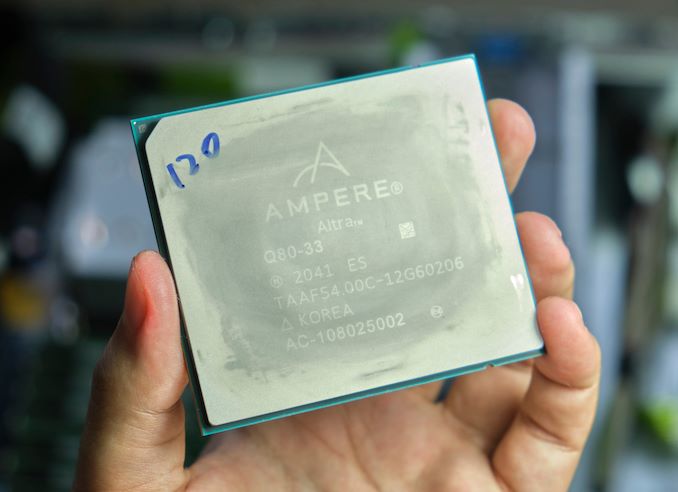
As we’re wrapping up 2020, one last large review item for the year is Ampere’s long promised new Altra Arm server processor. This year has indeed been the year where Arm servers have had a breakthrough; Arm’s new Neoverse-N1 CPU core had been the IP designer’s first true dedicated server core, promising focused performance and efficiency for the datacentre.
Earlier in the year we had the chance to test out the first Neoverse-N1 silicon in the form of Amazon’s Graviton2 inside of AWS EC2 cloud compute offering. The Graviton2 seemed like a very impressive design, but was rather conservative in its goals, and it’s also a piece of hardware that the general public cannot access outside of Amazon’s own cloud services.
Ampere Computing, founded in 2017 by former Intel president Renée James, built upon initial IP and design talent of AppliedMicro’s X-Gene CPUs, and with Arm Holdings becoming an investor in 2019, is at this moment in time the sole “true” merchant silicon vendor designing and offering up Neoverse-N1 server designs.
To date, the company has had a few products out in the form of the eMAG chips, but with rather disappointing performance figures - understandable given that those were essentially legacy products based on the old X-Gene microarchitecture.
Ampere’s new Altra product line, on the other hand is the culmination of several years of work and close collaboration with Arm – and the company first “true” product which can be viewed as Ampere pedigree.
Today, with hardware in hand, we’re finally taking a look at the very first publicly available high-performance Neoverse based Arm server hardware, designed for nothing less than maximum achievable performance, aiming to battle the best designs from Intel and AMD.
Mount Jade Server with Altra Quicksilver
Ampere has supplied us with the company’s server reference design, dubbed “Mount Jade”, a 2-socket 2U rack unit sever. The server came supplied with two Altra Q80-33 processors, Ampere’s top-of-the-line SKU with each featuring 80 cores running at up to 3.3GHz, with TDP reaching up to 250W per socket.
The server was designed with close collaboration with Wiwynn for this dual socket, and with GIGABYTE for the single socket variant, as previously hinted by the two company’s announcements of leading hyperscale deployments of the Altra platforms. The Ampere-branded Mount Jade DVT reference motherboard comes in a typical server blue colour scheme and features 2 sockets with up to 16 DIMM slots per socket, reaching up to 4TB DRAM capacity per socket, although our review unit came equipped with 256GB per socket across 8 DIMMs to fully populate the chip’s 8-channel memory controllers.
This is also our first look at Ampere’s first-generation socket design. The company doesn’t really market any particular name to the socket, but it’s a massive LGA4926 socket with a pin-count in excess of any other commercial server socket from AMD or Intel. The holding mechanism is somewhat similar to that of AMD’s SP3 system, with a holding mechanism tensioned by a 5-point screw system.
The chip itself is absolutely humongous and amongst the current publicly available processors is the biggest in the industry, out-sizing AMD’s SP3 form-factor packaging, coming in at around 77 x 66.8mm – about the same length but considerably wider than AMD’s counterparts.
Although it’s a massive chip with a huge IHS, the Mount Jade server surprised me with its cooling solution as the included 250W type cooler only made contact with about 1/4th the surface area of the heat spreader.
Ampere here doesn’t have a recessed “lip” around the IHS for the mounting bracket to hold onto the chip like on AMD or Intel systems, so the actual IHS surface is actually recessed in relation to the bracket which means you cannot have a flat surface cooler design across the whole of the chip surface.
Instead, the included 250W design cooler uses a huge vapour chamber design with a “pedestal” to make contact with the chip. Ampere explains that they’ve experimented with different designs and found that a smaller area pedestal actually worked better for heat dissipation – siphoning heat off from the actual chip die which is notably smaller than the IHS and chip package.
The cooler design is quite complex, with vertical fin stacks dissipating heat directly off the vapour chamber, with additional large horizontal fins dissipating heat from 6 U-shaped heat pipes that draw heat from the vapour chamber. It’s definitely a more complex and high-end design than what we’re used to in server coolers.
Although the Mount Jade server is definitely a very interesting piece of hardware, our focus today lies around the actual new Altra processors themselves, so let’s dive into the new Q80-33 80-core chip next.


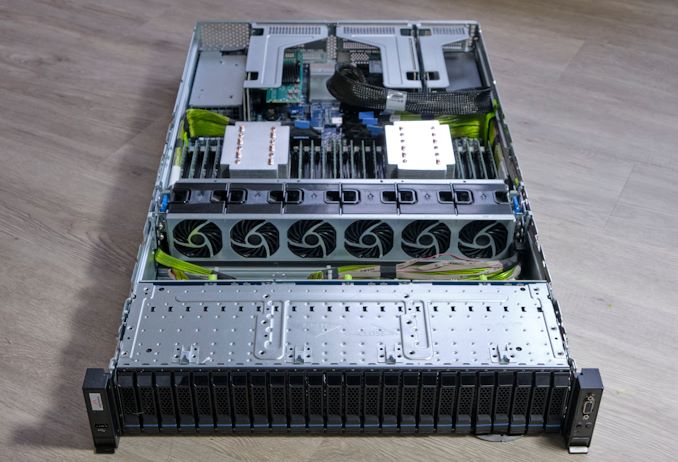
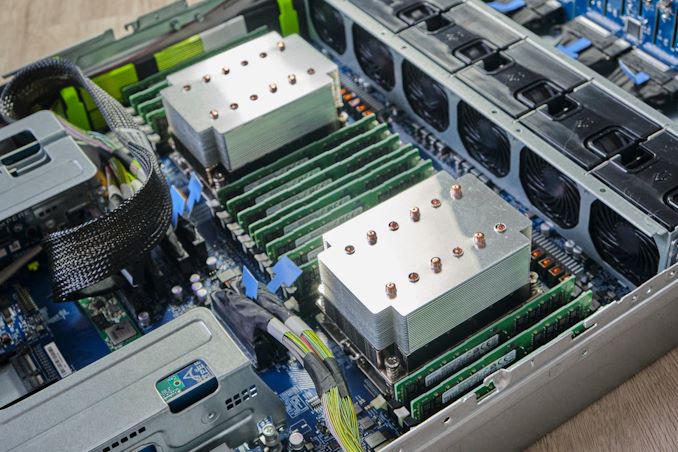
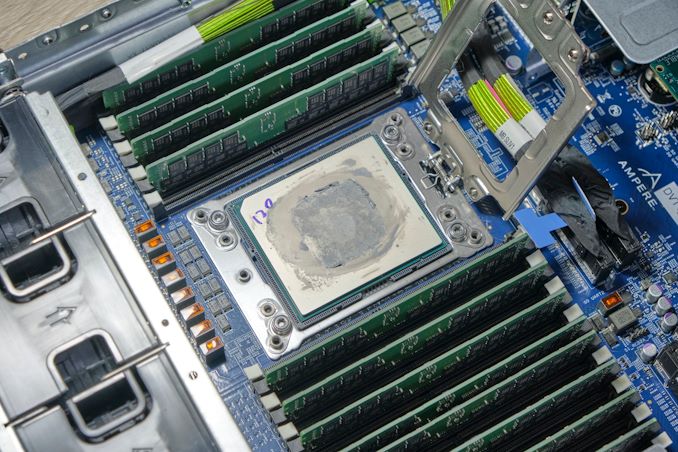
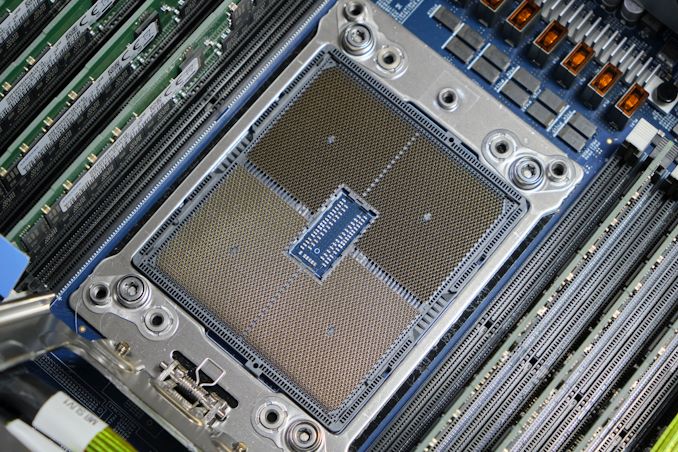
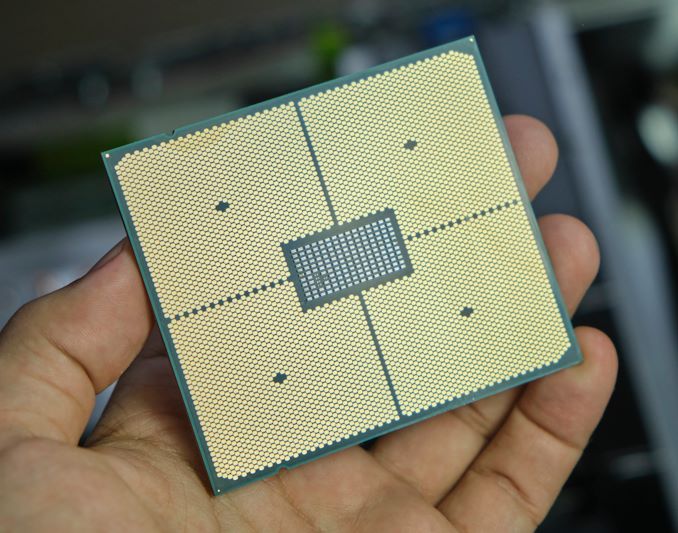

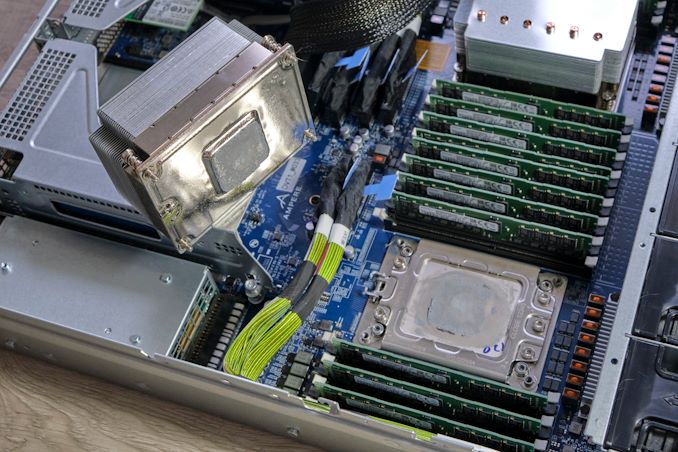
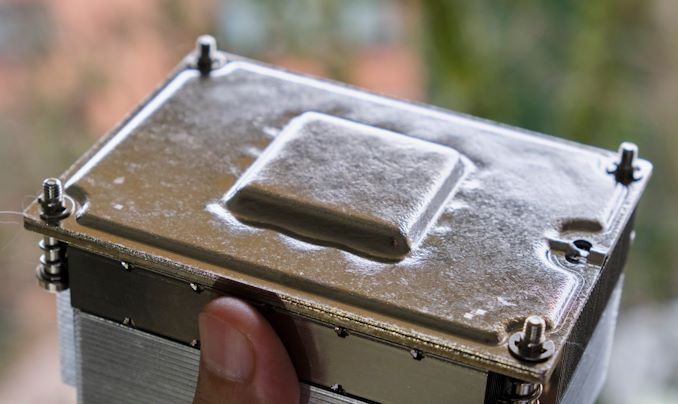
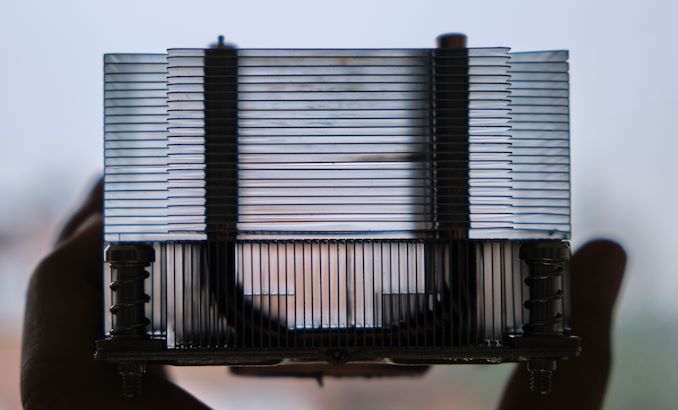








148 Comments
View All Comments
mode_13h - Monday, December 21, 2020 - link
I agree that people should do a sanity-check on their numbers.Spunjji - Monday, December 21, 2020 - link
"This thing is quite big."Package size is not die size.
If Nvidia can pump out dies more than twice the area on an inferior process and still get some perfect dies, I suspect they'll have no issues whatsoever with yield on TSMC 7nm at this stage - especially with the ability to sell lower-core-count variants.
Samus - Sunday, December 20, 2020 - link
Die harvested models with less cores sell for only 5-10% less. So I'm not sure if that means yields are really good, or really bad. Apparently they seem to be pushing the 80 core models pretty hard since so many are being offered.Then again, it depends what we define as yield quality? Defects seem to be low, but binning could be another issue as only two models seem to hit 3.3GHz and at incredibly high power budgets.
Spunjji - Monday, December 21, 2020 - link
3.3Ghz is about where that architecture tops out - I'm not sure that tells us much about yield. To me, the pricing seems to indicate that they aren't expecting to have to shift a ton of the lower-core-count die-harvested models.damianrobertjones - Friday, December 18, 2020 - link
Assuming that Intel just wants to milk customers forever, just like nVidia/phone oems do, they should quickly bridge the performance gap. They'll just have to stop being lazy and actually provide us with more than a drip fed speed increase.fishingbait - Friday, December 18, 2020 - link
An Apple guy I see. Remember that up until a couple of months ago Apple was charging you $1000 for a laptop with a dual core 1.1GHz chip.The "phone OEMs" finally have a core that can somewhat compete with Apple's Firestorm. It will take them a couple iterations to perfect it but they are on the right path. As for Intel, another story entirely. The latest word is that their 10nm process isn't going to well and they have hit yet another delay for 7nm. They may hit up Samsung's foundries just to get a product out (due to TSMC not having any capacity until December 21). So while their issues are far more significant than those for Android phones, it isn't due to their lazily milking customers. They have real tech issues to deal with, issues of the sort that Apple and AMD don't have to worry about because they lack the capability and expertise required to make their own chips.
mode_13h - Sunday, December 20, 2020 - link
> because they lack the hubris to think they should try to make their own chips.Fixed that for you.
Spunjji - Monday, December 21, 2020 - link
"So while their issues are far more significant than those for Android phones, it isn't due to their lazily milking customers."Correct, their technical issues are entirely separate from their strategy of lazily milking customers.
Ridlo - Friday, December 18, 2020 - link
While no Blender test is indeed a bummer, did you guys tried testing with other ray tracing application (LuxMark, C-Ray, Povray, etc.)?Andrei Frumusanu - Friday, December 18, 2020 - link
I didn't have a standalone test, but Povray is part of SPEC.